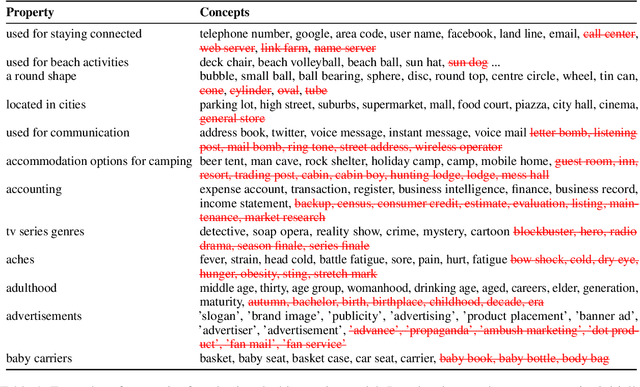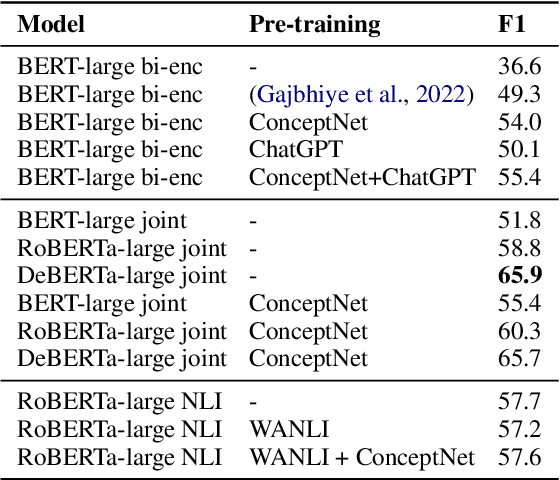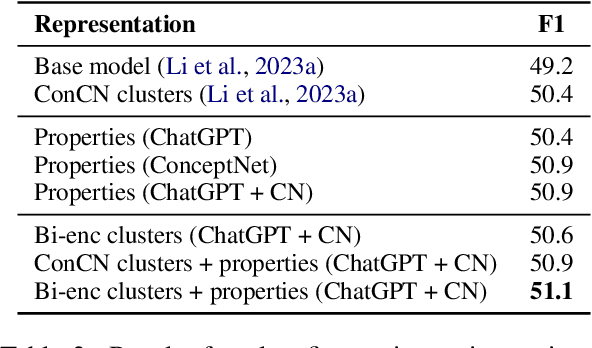What do Deck Chairs and Sun Hats Have in Common? Uncovering Shared Properties in Large Concept Vocabularies
Paper and Code
Oct 23, 2023



Concepts play a central role in many applications. This includes settings where concepts have to be modelled in the absence of sentence context. Previous work has therefore focused on distilling decontextualised concept embeddings from language models. But concepts can be modelled from different perspectives, whereas concept embeddings typically mostly capture taxonomic structure. To address this issue, we propose a strategy for identifying what different concepts, from a potentially large concept vocabulary, have in common with others. We then represent concepts in terms of the properties they share with the other concepts. To demonstrate the practical usefulness of this way of modelling concepts, we consider the task of ultra-fine entity typing, which is a challenging multi-label classification problem. We show that by augmenting the label set with shared properties, we can improve the performance of the state-of-the-art models for this task.
 Add to Chrome
Add to Chrome Add to Firefox
Add to Firefox Add to Edge
Add to Edge